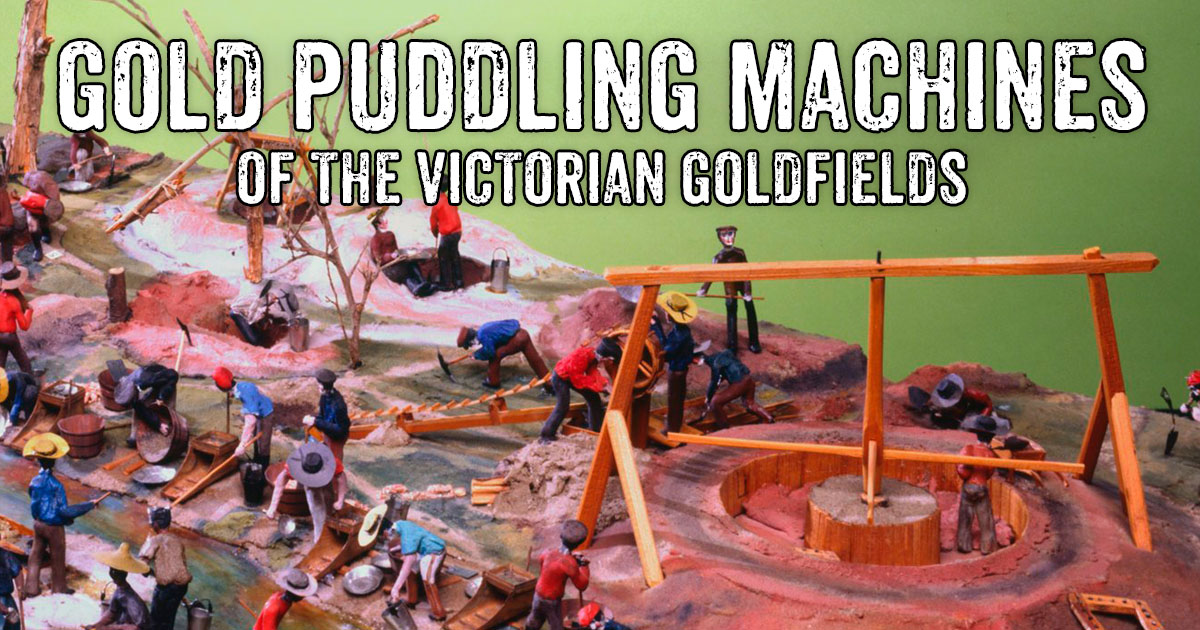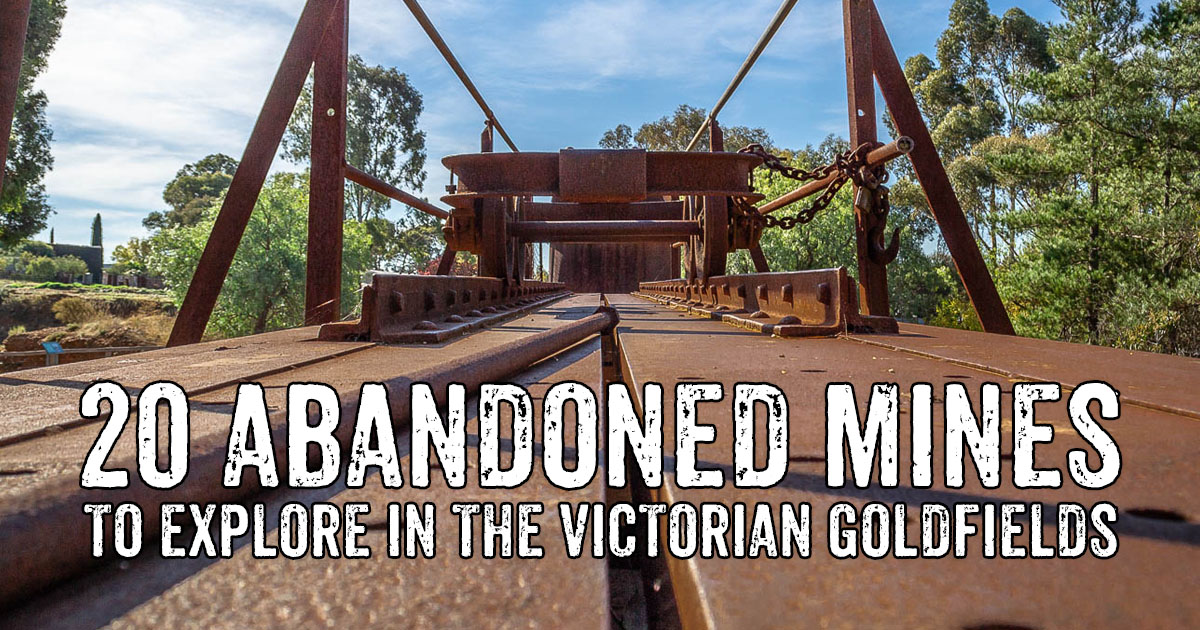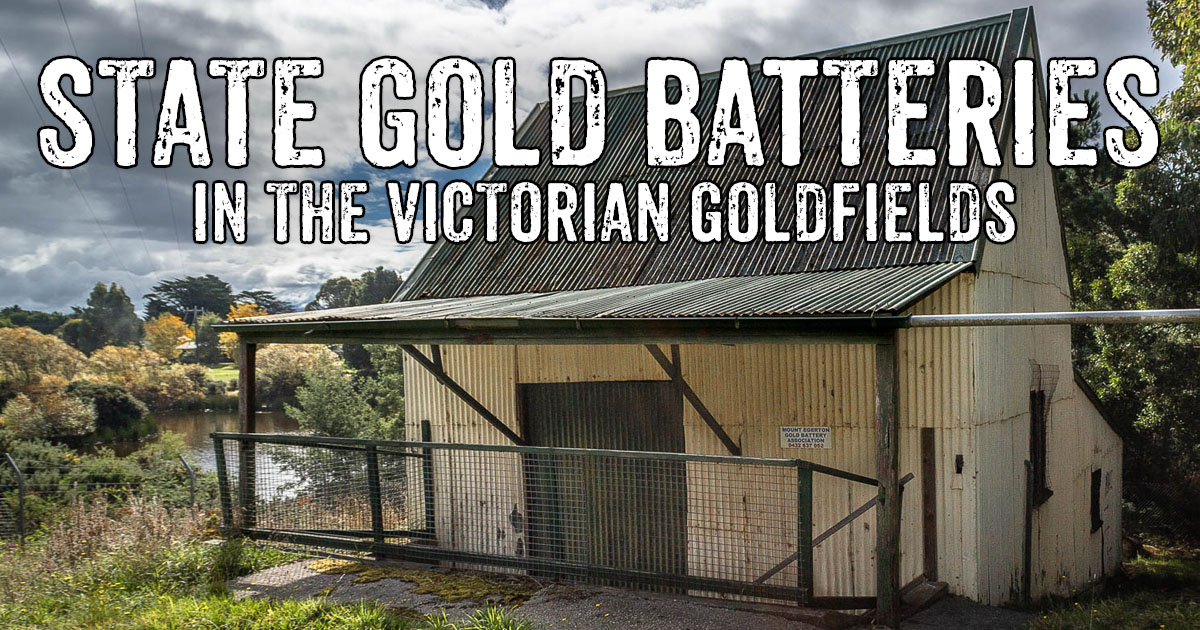
Deep Sinking, Bakery Hill, Ballaarat 1853 - S. T. Gill. Source: National Museum Australia.
One of the many obstacles faced by miners during the gold rush was the problem of poor ventilation in mine shafts.
As sinking got deeper the air at the bottom of the shaft became hot and stale, making work difficult or impossible. Foul air down the shafts was often as dangerous as water, and could be perilous to miners as they dug deeper in search of their gold.
To overcome this, "windsails" were installed which were designed to catch the breeze and divert fresh air to the miner working down below.
"Below it is very hot and the air is stale. One way to overcome this is to make out of cloth a chimney eight of [sic] ten inches in diameter. The lower end is near the miner's head; the other end some feet above the ground has a sort of side funnel which can be positioned into the breeze, to force fresh air below."
Memoirs of gold-digging in Australia, Seweryn Korzelinski
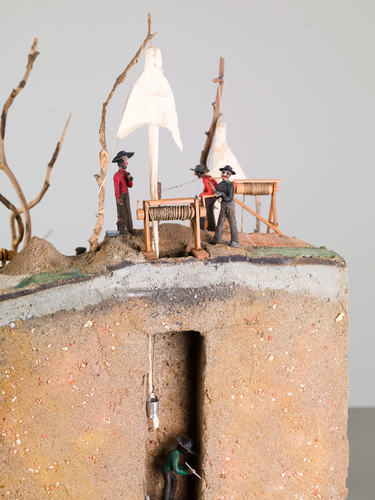
Section of Alluvial Mining Model - Daisy Hill, showing windsail in use. Model made by C.E. Nordstrom in 1858. Source: Museums Victoria
What is a windsail?
Fashioned after the ventilators on the migrant ships which brought the diggers to the goldfields, a windsail is a simple apparatus used for ventilating relatively shallow mine shafts.
Constructed of canvas piping and rigged to a wooden post above the shaft, the top section is open with wings or "sails" attached to the sides, and the rest of the piping hangs down into the shaft.
The open section is positioned so as to catch the breeze and divert fresh air down the tube to the miners working below.
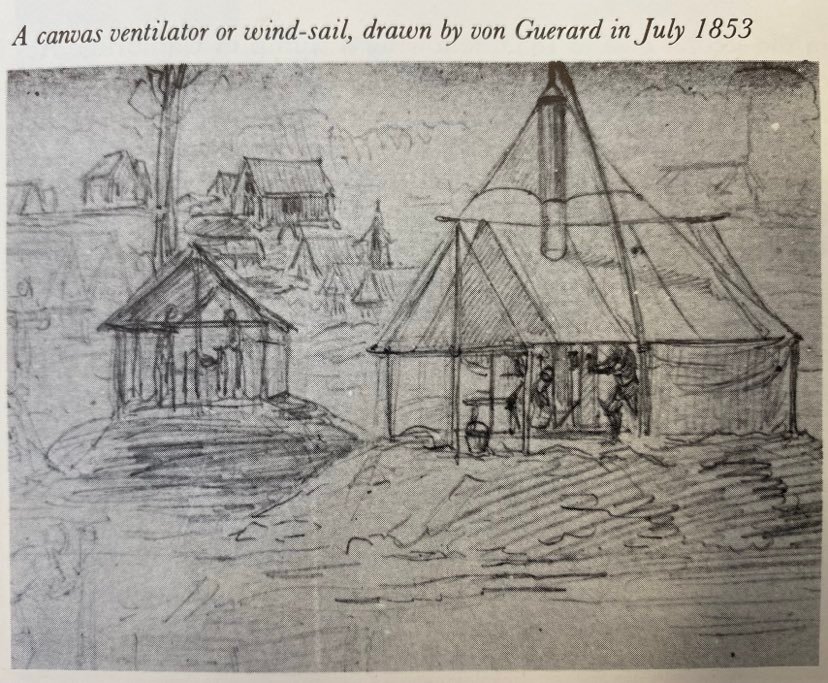
Image source: Lucky City, The First Generation at Ballarat: 1851-1901, Weston Bate, 1999.
First implemented at Rotten Gully in Ballarat, windsails quickly became an iconic part of the landscape in the early years of the Victorian gold rush.
"The flat beneath the township is an exceedingly busy scene, and the windsails, which convey fresh air to the deep sinking miners below, are 'Thick as the leaves in Vallambrosa'".
A description of Ballarat, The Argus, 8th March 1855. Source: Trove.
The following image depicts a dense combination of stores and windsails along Main Road, Ballarat.

Image source: Lucky City, The First Generation at Ballarat: 1851-1901, Weston Bate, 1999.
Windsail Definitions and terminology
General windsail definitions
General definition of a windsail provided by the Collins Dictionary:
Windsail - A sail rigged as an air scoop over a hatch or companionway to catch breezes and divert them below
Definition of a windsail used for ship ventilation, provided by the Oxford English Dictionary:
Windsail - A long wide tube or funnel of sailcloth used to convey air to the lower parts of a ship.

Windsails at Victoria Reef, 1857, Alexander Fox (photographer).
Mining windsail definitions
R. Brough Smyth provided the following definition of a windsail in his 1869 book, The Goldfields and Mineral Districts of Victoria:
Windsail - The top part of the canvas piping which is used for conveying air down shallow shafts for ventilating purposes. This portion of the piping is open, and on each side of it is fastened a wing or sail, which is spread out to catch the wind.
Another definition is provided in Gold! Gold! Gold! The Language of the Nineteenth-Century Victorian Gold Rushes, edited by Bruce Moore:
And another provided in An Archaeologist's Guide to Mining Terminology, Neville A. Ritchie and Ray Hooker, Australasian Historical Archaeology, 15, 1997:Windsail - A device erected above a deep shaft in order to ventilate it, since the air in such shafts often became foul.
Windsail - A canvas sail suspended from a pole adjacent to a shaft to divert fresh air into the shaft. Used on the arid Australian goldfields.
Other terms for windsails include windscoops, canvas piping, and canvas ventilator.
"We had to give over working down the hole this afternoon, as the candles would not burn, owing to the air been foul. George is repairing the wind sail, so as to cause a better draft."
Journal of a voyage to Australia, 1855 diary of Henry Morrison
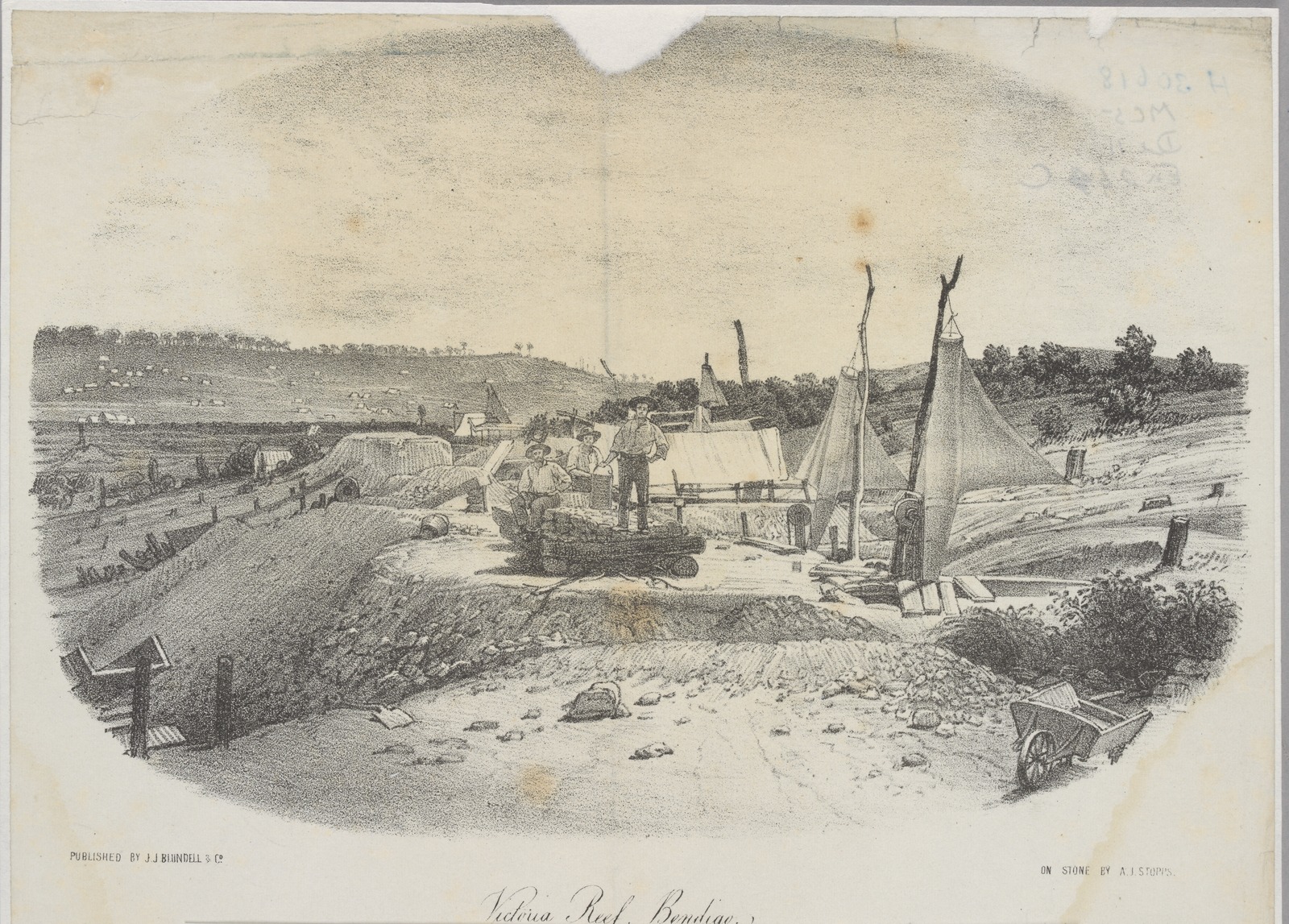
Victoria Reef, Bendigo from a photograph by Fox. Stopps, A. J. (ca. 1870). Source: State Library Victoria.
Windsails on display
You can see several windsails set up on display at Ballarat's living gold rush museum, Sovereign Hill.
The following photos were taken around The Diggings, where you can check out many examples of different surface mining technologies. If you head there for a look, be sure to grab a tin dish and try your luck panning for gold in the creek!



Sovereign Hill also features a tent store, T. Murphy. California Tent Maker. Here you'll find a windsail up on display alongside a sign which says:
WINDSAILSFOR SUPERIOR MINESHAFT VENTILATIONMade & Supplied on request.
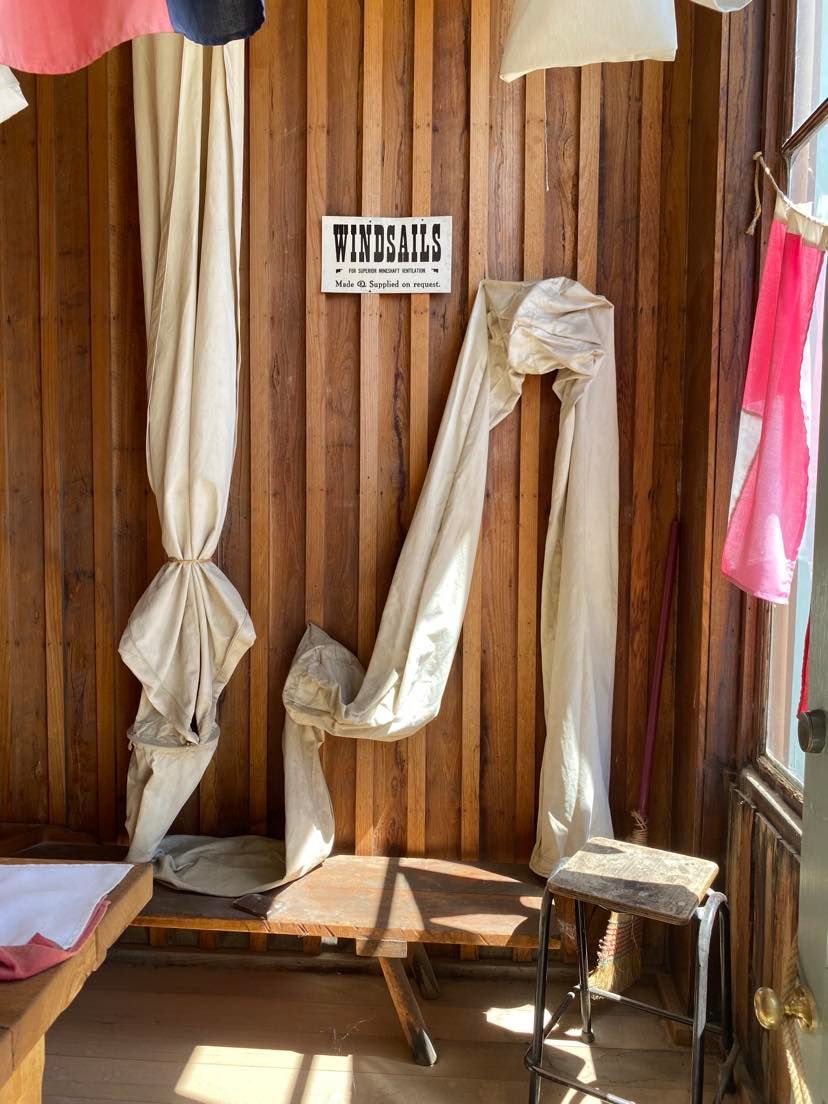
Windsail on display, T. Murphy, California Tent Maker, Sovereign Hill.
Ballarat's Gold Museum, set alongside Sovereign Hill, has a portion of a canvas windsail in their collection:
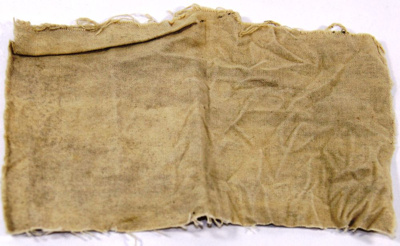
Portion of canvas windsail, Gold Museum, Ballarat.
Windsails for sale!
Old Crossman, an American Tent-maker, placed an advertisement for his products in The Age in 1855.
Aimed at the Diggers of Ballarat, he listed the improved machinery he had on offer including a windsail "of magnificent proportions".
Prevention of danger! A great incentive for diggers to purchase windsails from Hay's Tent Store at Forest Creek. The following advertisement was published in 1858:
Advertisement, Mount Alexander Mail, 25th January 1858. Source: Trove.
Tent and tarpaulin maker, T. Morgan of Eaglehawk, advertised his windsails along with many other products in the Bendigo Advertiser, 1858:
Advertisement, Bendigo Advertiser, 1st November 1858. Source: Trove.
Windsails replaced by more efficient technology
The widespread use of windsails was confined to the earlier years of the Victorian gold rush. Although they continued to be used to ventilate shallow shafts, by the mid 1850s they began to be replaced by more efficient methods of ventilation, including fans, mechanical blowers, furnaces, and interconnections between mine shafts.
The following was published in the Mount Alexander Mail, 4th May 1855, and briefly describes the introduction of more efficient technologies on the Ballarat goldfield in the mid 1850s (source: Trove):
BALLARAT( From the 'Times,')
There are unmistakeable signs of our being determined during this winter, to place Ballarat even higher than it has yet been among the gold fields of Victoria.
Quartz-crushing machines, steam-power, long toms, puddling machines, and leasing of old and so-called worked ground, are being introduced on all sides, and when the yields from these sources are joined to those which are to be derived from the established one - deep sinking on maiden ground - there is no fear of the result.
As if in rivalry to the innovations, there is a more determined spirit among the deep sinkers, who, by the aid of steam, are now enabled to keep under the water which heretofore retarded their progress.
Every day brings some improved machinery to light. The fly wheels, the fanners instead of windsails and many other innovations, have tended in no inconsiderable degree to lessen the expenditure of time and manual labour which a twelvemonth since were reckoned indispensable in Ballarat mining.
The following description of the inefficiency of windsails at Pennyweight Hill was published in the Mount Alexander Mail, 24th July 1857 (source: Trove):
No water has yet been encountered in any of the claims, but this advantage is some-what neutralised by the somewhat general prevalence of foul air.
These noxious exhalations require to be dispersed by a constant stream of pure atmosphere, and the ordinary wind-sail is found ineffectual.
The fan ventilator is therefore generally preferred on Pennyweight Hill, and it is indispensable to keep even this in continual operation, so rapid is the generation of mephitic vapour.

Windsail at Hill End, NSW, 1872/3, American and Australasian Photographic Company (Sydney NSW). Source: National Library of Australia.
Many thanks to a few members of the Friends of Wattle Gully and Chewton Facebook group for their assistance sourcing some of the historical images of windsails featured on this page. Their Facebook page is regularly updated with lots of interesting information, photographs, maps and stories, and is definitely worth following - check it out here.

